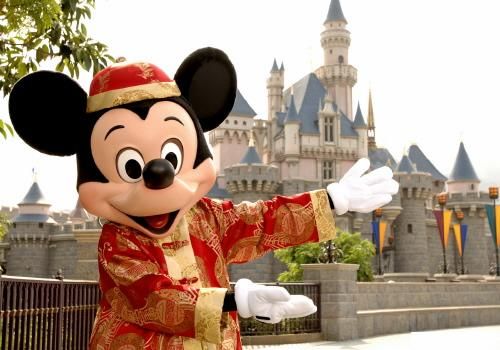
Shanghai Disneyland: The Integration and Competition of Sino-U.S. Soft Power
(Hong Kong) on 15 January 2009
by Zhang Jingwei (link to original)
The Original Article:
After all these years, the location of the Mainland China Disneyland has finally been decided. Disney confirmed on the 9th that it will be located at Pu Dong, Shanghai. The first phase is going to take 150 hectares, six times the size of Hong Kong Disneyland. The construction is expected to be completed in 2014 at the earliest. The fact that the dream project came true is a result of the economic and cultural interaction and competition between China and the U.S. It is also an end product of soft power integration between the two countries.
Economically, Disneyland in Europe and Hong Kong have been experiencing a deficit since 2007. Under the current financial crisis, Disney’s operations have become even more difficult. According to Disney’s fourth season financial report, the company’s profit has dropped 26.6%. The European Disneyland and the Hong Kong Disneyland, have together lost over 100 million U.S. dollars. The majority of Disneyland’s visitors are children and youth. They lose interest in things easily and therefore can’t really become “frequent visitors." Only by exploring new markets could Disney stop its drop in profit. Speeding up negotiations over Mainland China's Disneyland is in Disney’s best interest to escape from the plight.
The Chinese side is concerned because the country is being called to expand domestic demand. Disneyland settling in China is a one stone for two birds solution--it expands domestic demand while attracting foreign investment. As a result, Disneyland can also be seen as vital in terms of benefits between the U.S. and China.
Expanding Domestic Demands While Appealing To Foreign Investment
Culturally, Hollywood blockbusters and Disneyland are the cultural symbols of American values. Hollywood blockbusters have been widely introduced in China for many years. In return, Chinese movies have successfully entered the American market and brought the country’s attention to outstanding Chinese directors such as Zhang Yimou, Chen Kaige and Feng Xiaogang as well as actresses such as Zhang Ziyi and Gong Li.
Meanwhile, it has enabled a tight assembly of China’s popular culture in international society, making China’s soft power more abundant in the multi-lingual environment. While China is now pursuing creative industry and culture, the landing of Disneyland in China will doubtlessly make China’s comic and animation industry, creative products and theme park culture more prosperous.
This means that the Chinese government will be holding onto the Disneyland project. That is to say that, despite its American-style economy and culture, the Mainland China Disneyland will definitely be Chinese.
The landing of Disneyland in Mainland China is different than other industries--it will have a thorough exploration of the Chinese market and will also upgrade Disney to an intelligent label through China's broad and sophisticated history and culture. In recent years, Disney movies have been utilizing Chinese history and culture. First there was "Mulan" and then "The Secret of the Magic Gourd."
"Mulan," which was an independently Disney production, wasn’t very popular among Chinese people. This is because the movie did not include real Chinese cultural elements. "Kung Fu Panda" by DreamWorks Animation, however, had a much higher rating among Chinese due to its inclusion of real Chinese elements. By entering China, Disney will have its relevant products further adapted to correct Chinese culture in the future.
We can see Mainland China Disneyland not just as Disney simply landing in the Mainland China market, but also as a new form of cultural product, a product of win-win cooperation.
The Integration of Chinese and U.S. Soft Power
Ever since opening, there have been a lot of American investments in China. Economic cooperation has, on the one hand, facilitated the two countries’ relationship and, on the other hand, unfortunately, has led to hard power conflicts and confrontation over trade. Sino-American cooperation over Mainland China Disneyland is an economic and commercial alliance based on the two cultures. It is the final integration product of the two countries’ soft power.
In terms of economy and culture, the U.S. is energetic, outgoing and aggressive. China, however, is more general and inclusive. Two civilizations meeting each other might generate a new culture and new tide for the 21st century global village. It might be what Mainland China Disneyland is meant to do.
It is estimated that those under 15 years old in China will reach 300 million.
If each spends 200 yuan at Disneyland, we will be looking at a basic consumption of 60 billion yuan, which does not include other relevent industrial sales. Thus, the establishment of Mainland China Disneyland can be considered the greatest decision Disney has ever made.
What interferes with Mainland China Disneyland is the activation of the Chinese Disney Channel. It’s better for both sides to take a step back. Disney should respect Chinese tradition and customs and China could probably break the ice – if there is any – by granting the opening of the Chinese Disney Channel. Perhaps the Chinese Disney Channel could bring the entire Chinese broadcast system to reform. We might expect a situation in which a hundred flowers blossom and a hundred different entities compete with one another.
